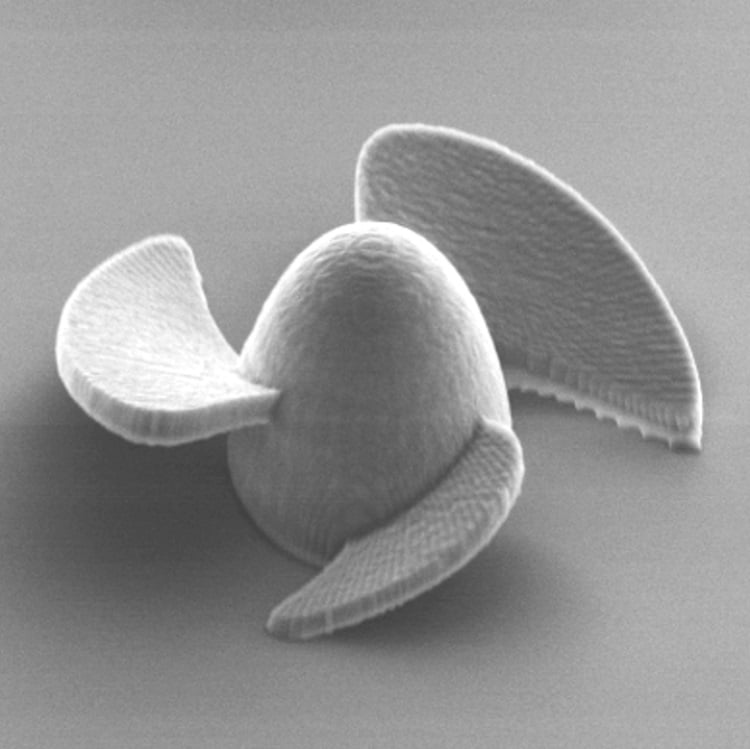Remotely powered microrobots are being touted as next-generation vehicles for drug delivery, and they continue advancing. In the past few years, we have seen everything from fish-shaped microrobots to microrobots propelled by air bubbles and ultrasound.
Now, engineers from the University of Colorado Boulder have taken a major step in micro-robotics, designing a new class of tiny, self-propelled robots that can zip through liquid at incredible speeds – and may one day even deliver prescription drugs to hard-to-reach places inside the human body.
The microrobots are made from biocompatible polymers using a technology similar to 3D printing. The machines look a bit like small rockets and come complete with three tiny fins. Each of the robots carries a small bubble of trapped air, similar to what happens when you dunk a glass upside-down in the water. When the machines are exposed to an acoustic field, like the kind used in ultrasound, the bubbles will begin to vibrate wildly, pushing water away and shooting the robots forward.
Each microbot measures only 20 micrometers wide, several times smaller than the width of a human hair. The fins allow the robot to travel at speeds of about 3 millimeters per second, or roughly 9,000 times their own length per minute.
“Microscale robots have garnered a lot of excitement in scientific circles, but what makes them interesting to us is that we can design them to perform useful tasks in the body,” said C. Wyatt Shields, a co-author of the new study.

In the lab tests, researchers fabricated schools of microrobots encapsulating high concentrations of dexamethasone, a common steroid medication. They then introduced thousands of these tiny bubble-based, sound-powered bots into the bladders of lab mice. The microrobots dispersed through the organs before sticking onto the bladder walls, which would likely make them difficult to pee out.
Once there, the bots slowly released more than 90% of the dexamethasone over the course of about two days. Such a steady flow of medicine could allow patients to receive more drugs over a longer span of time, improving outcomes for patients, researchers say.
A lot of work needs to be done before microrobots can travel through real human bodies. Also, the team wants to make the machines fully biodegradable so that they would eventually dissolve in the body. Researchers envision a range of applications for their robots in the future.
“If we can make these particles work in the bladder,” said Jin Lee, lead author of the study, “then we can achieve a more sustained drug release, and maybe patients wouldn’t have to come into the clinic as often.”
Journal reference:
- Jin Gyun Lee, Ritu R. Raj, Cooper P. Thome, Nicole B. Day, Payton Martinez, Nick Bottenus, Ankur Gupta, C. Wyatt Shields IV. Bubble-Based Microrobots with Rapid Circular Motions for Epithelial Pinning and Drug Delivery. Small, 2023; DOI: 10.1002/smll.202300409
